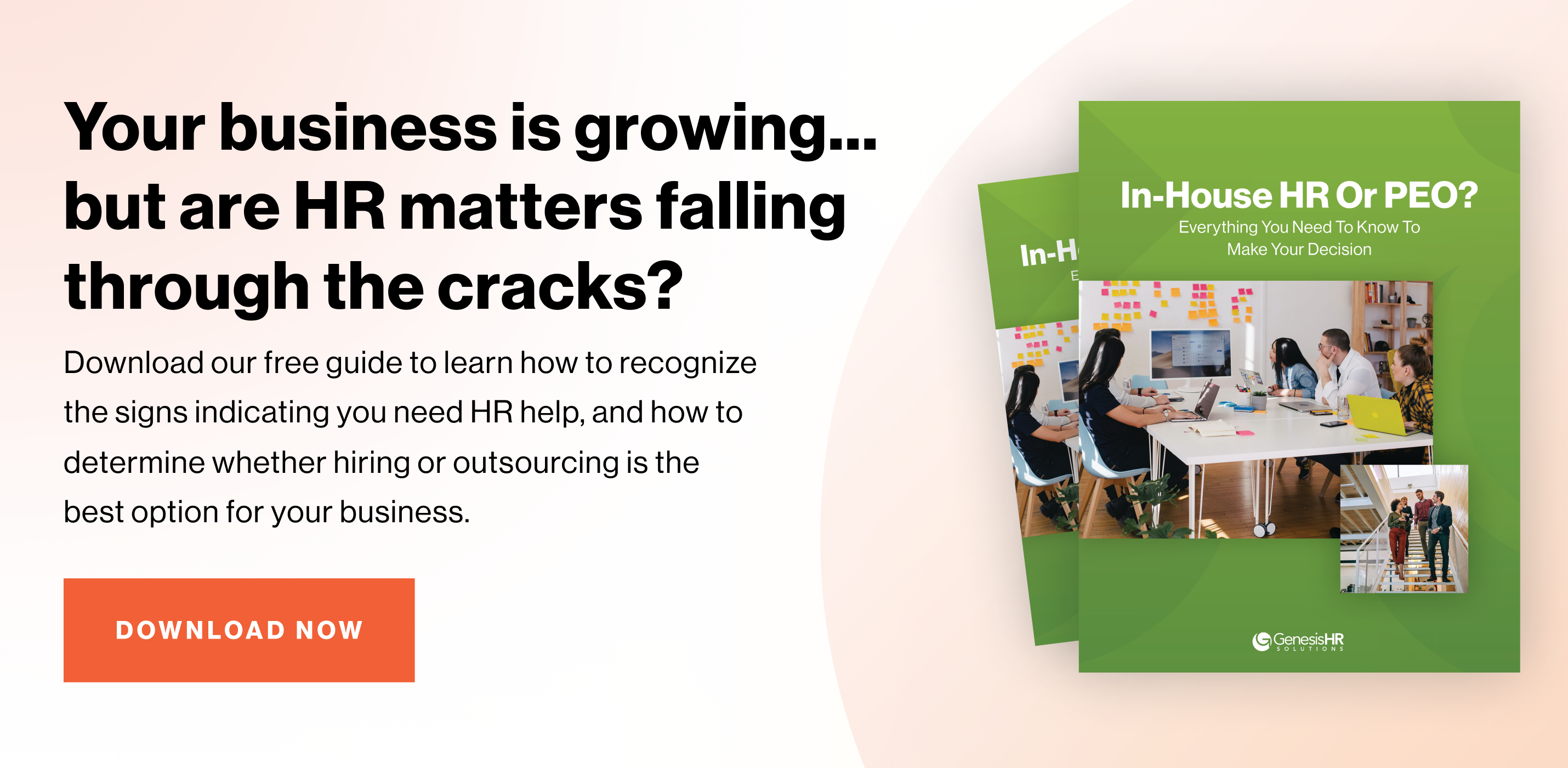Your business is growing, which is great! But, along with that excitement, you may be experiencing some growing pains. Those internal challenges may have led you to realize you need help managing the human resource functions of your business if you want to continue to grow and scale successfully for the long-term—issues that highlight the limitations of their internal processes in handling the requirements for expansion. If you’re experiencing one (or many) of the following scenarios, it’s time to begin thinking about what you should do differently:
- You don’t have one person or role dedicated to the HR functions of your business.
- You’re hoping to attract better talent both locally and globally.
- You want to grow your business into other states, but you’re afraid of the complications that come from having employees outside of your original business footprint.
- You have experienced a negative compliance situation—you may have been fined as an employer, faced complaints, etc.
- You worry about what’s falling through the cracks of your business, but you don’t think you can shuffle around anyone in your existing employee pool to cover the responsibilities and get it done the right way.
Do any of these situations sound familiar? If so, it’s not because you’re a bad business owner; on the contrary, experiencing growth pains means you’re heading in the right direction! However, you need to make sure you quickly address these issues before they spiral to a point where you can no longer control them. Acknowledging that you can’t do everything is the first step toward greater efficiency and growth.
Acknowledging that you can’t do everything is the first step toward greater efficiency and growth. Share on XNeed HR help for your small business? Here’s how to decide what kind of help you need.
Once you’ve recognized that the existing pain points are holding you back, you may be wondering what’s next. This guide will help you determine how to assess your needs and take the necessary steps to address them.
First, inventory the areas where you need help.
In addition to recognizing your pain points, think about what is needed to address those problems over the long term. Business owners and/or executives should step back and inventory neglected tasks and responsibilities as well as the people your organization already employs. Can some of these needs be met internally by reallocating roles? Which of the tasks you’ve identified require a role or skills you don’t already have?
Next, understand your options for “filling the gap.”
In the HR market, there are two major options to consider: 1) hire an additional full-time staff member or 2) partner with one or more external companies that provide HR services.
Option 1: Hire an additional full-time staff member.
Your first thought may be to add a new internal position for HR- and compliance-related tasks. However, for small and midsize businesses, this is often not only financially difficult to swing, but it also doesn’t fully solve all the HR problems you’re facing.
It’s unrealistic to think that a single hire can handle the entire HR function. There’s simply too much ground to cover—compliance, technology, HR, payroll, benefits, and more—and yet it all needs to be done. You could hire multiple people, but for most small businesses, that strategy would be cost-prohibitive (especially for an area that isn’t revenue-generating).
One case where it may work is if you have a narrow set of outcomes. For instance, if your only need is payroll, you may be able to find a single hire who can handle both at a cost you can support.
Option 2: Partner with an external company that provides HR services (outsource).
In most situations, outsourcing your HR to the right partner is the best way to help your business continue to grow while simultaneously maintaining compliance, keeping your employees happy, and controlling your costs. If you’re considering scaling your efforts, building your team, and increasing your bottom line, you need to consider HR outsourcing.
There are several types of outsourcing partners to consider:
- Professional Employer Organizations (PEO)
- Administrative Service Offerings (ASO)
- Human Resource Outsourcing Companies (HRO)
- Staffing companies
- Independent contractors
Wondering what all these different types of partners do—and how they measure up against hiring a full-time staff member?
To find out, download the complete guide, “Should I Go With In-House HR Or A PEO?”
Our newest guide, “Should I Go With In-House HR Or A PEO?”, takes a closer look at all your small business HR options, providing you with insight and information to help you determine which solution is right for your company’s specific needs and growth goals.
You can download the guide, absolutely free, by clicking here.





